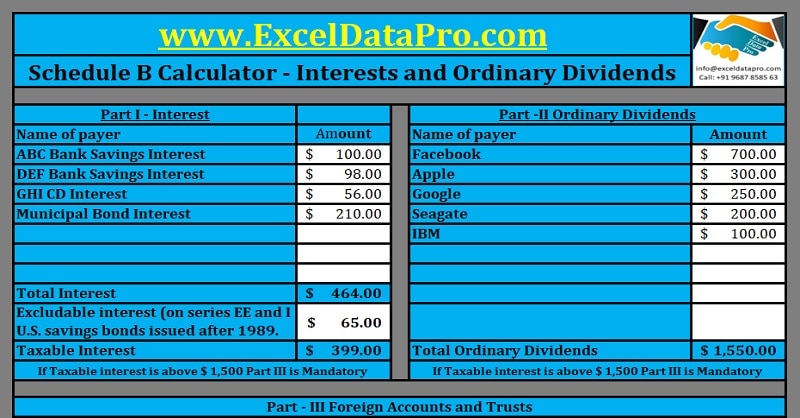
Schedule B Calculator is an excel template that consists of calculations of taxable interest and ordinary dividends under Schedule B of Form 1040 and 1040A for federal income tax.
Interests and dividend incomes received during a tax year are reported in Schedule B.
It is not mandatory to file Schedule B for taxpayer every year. A taxpayer requires filing the Schedule B only when he/she receives interest and dividend above a certain threshold.
Who needs to file Schedule B?
According to IRS, you require to file Schedule B (Form 1040A or 1040) if any of the following applies:
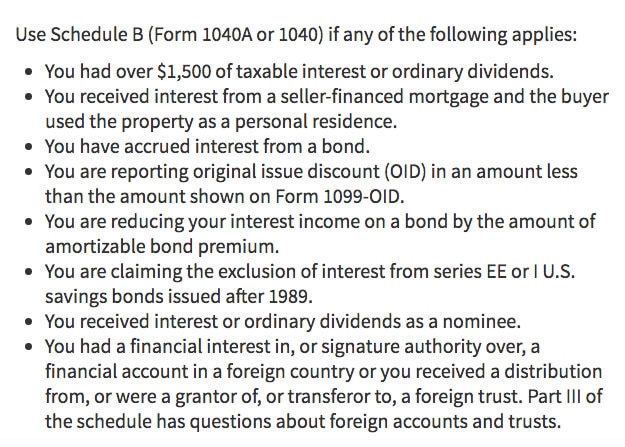
For the purpose ease of understanding and avoiding mistakes, we have created an excel template Schedule B Calculator considering all the above points.
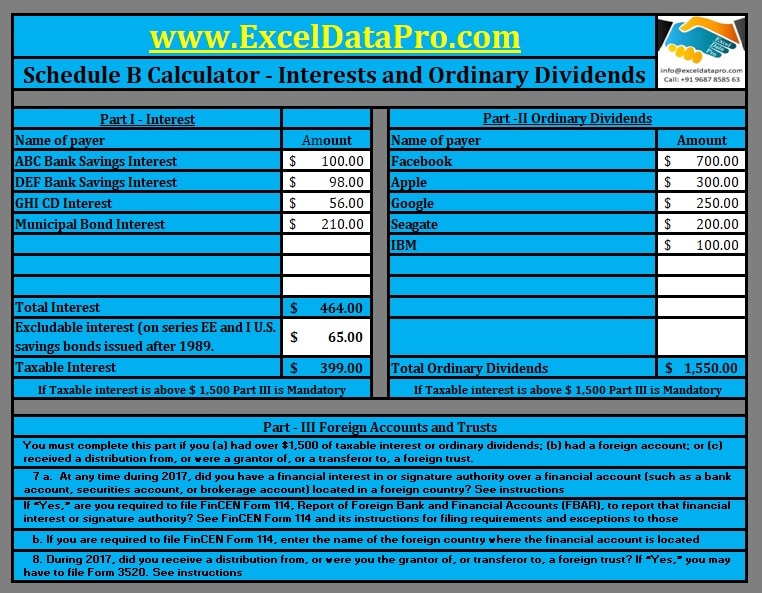
Click here to download Schedule B Calculator Excel Template.
To download the same calculator in Numbers click the link below:
Schedule B Calculator Apple Numbers Template
It is just the replica of the Schedule B fillable PDF available on IRS website. Click on the link below to download the pdf.
Schedule B – Interests and Ordinary Dividends
Let us discuss the contents of the template in detail.
Contents of Schedule B Calculator
Schedule B consist of 3 sections:
- Interests – Part I
- Ordinary Dividends – Part II
- Foreign Accounts and Trusts – Part III
1. Interests – Part I
Usually, all types of interest are subject to federal income tax except Interest earned on Series I and EE savings bonds issued after 1989.
These interests include interest from bank savings accounts, investment in corporate bonds etc. The entities paying interest report them in Form 1099-INT.
1099 provides you with relevant details to be filled in Schedule B.
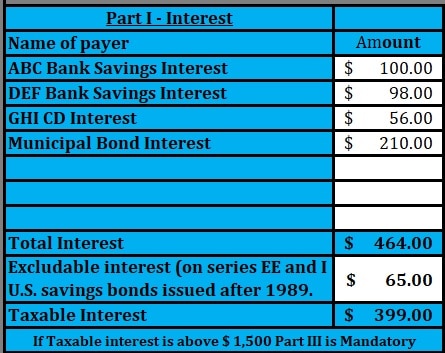
If you received a Form 1099-INT, Form 1099-OID, or substitute statement from a brokerage firm, list the firm’s name as the payer and enter the total interest shown on that form.
Just enter the relevant description as well as amounts in respective cells in Part I. It will automatically make subtotals with a predefined formula using the SUM Function.
As Interests earned on Series I and EE savings bond are not subject to federal income tax, it will be deducted from the interest amounts.
2. Ordinary Dividends – Part II
Dividends refer to rewards in form of cash or shares etc given by a company to its shareholders. Similar to interests, if the total dividends income exceeds a certain threshold, it is mandatory to file Schedule B.
You need to report the dividends along with the name of the company that has paid the dividends.
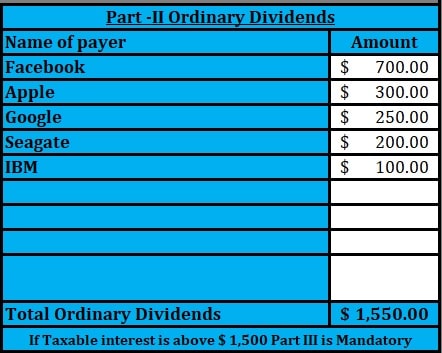
Enter the name of the organization/company paying the dividend and amounts in Part II. The system will automatically subtotal the amount for you.
3. Foreign Accounts and Trusts – Part III
A taxpayer must complete Part III, if :
(a) has the taxable interest or ordinary dividends over $1,500;
(b) has a foreign account; or
(c) has received a distribution from, or were a grantor of, or a transferor to, a foreign trust.

Taxpayers having interests from foreign accounts during the tax year must file FinCEN Form 114.
A taxpayer who has been receiving a distribution from, or were the grantor of, or transferor to, a
foreign trust has to file Form 3520.
This section only consists of only yes or no. Thus, no amounts are reported here. All amounts will be reported in FinCEN Form 114, Form 3520 etc.
We thank our readers for liking, sharing and following us on different social media platforms.
If you have any queries please share in the comment section below. I will be more than happy to assist you.
Leave a Reply